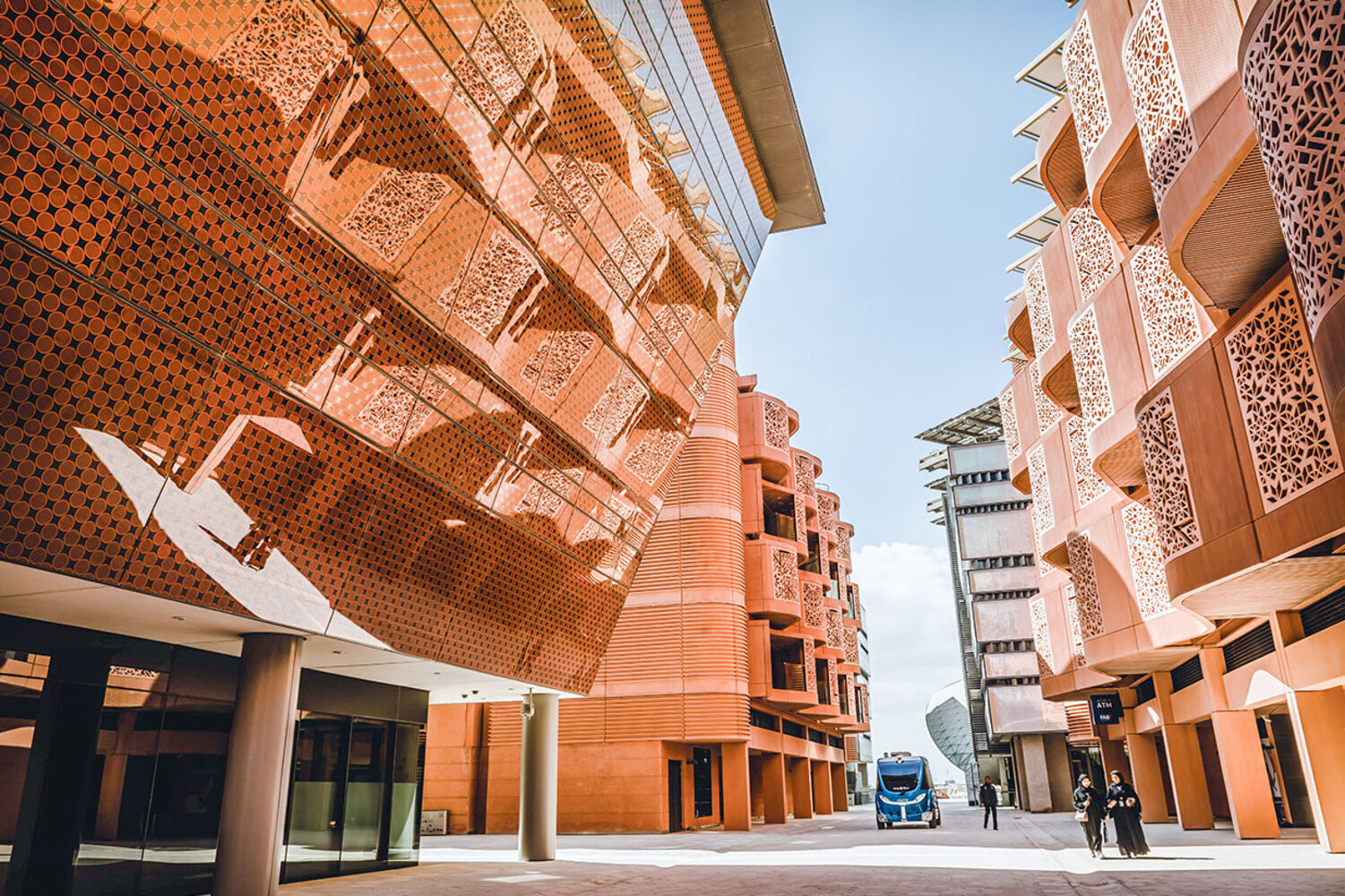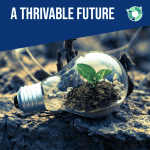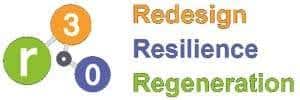The 21st century faces many challenges, with rapid urbanisation and population growth at the forefront. By 2050, an estimated 68% of the world’s population is expected to reside in urban areas (Tijjani et al., 2025). Cities are struggling to manage these growing populations, often falling behind in planning and infrastructure. Smart cities have emerged as a pivotal tool for urban innovation and development worldwide (Nath et al., 2023). Smart cities exemplify Values-Based Innovation and Strong Sustainability, two of THRIVE Project’s Foundational Focus Factors (FFFs). Values-Based Innovation aims to create inclusive, purpose-driven solutions that align with ethical principles and community values. Strong Sustainability is a commitment to preserving the natural capital and ecological limits.
Smart Cities in a Globalised World
While there is no global definition, early smart city models focused mainly on technology. They aimed to improve infrastructure and services such as transport, energy, and communication. Over time, this approach shifted. Modern smart cities adopt a human-centred model, integrating socio-economic factors, governance, and environmental concerns. They leverage Information Communication Technologies (ICT) to improve efficiency, sustainability, and quality of life (Alkhereibi et al., 2025).
Smart cities demonstrate the interdisciplinary nature of urban innovation. Their success depends not only on technology but also on social, institutional, and economic infrastructure, as well as human and social capital (Tijjani et al., 2025). Smart city developments in Brazil and the UAE exemplify two distinct approaches to addressing urban challenges through technology and digital infrastructure. The globalisation of smart city models has created a complex landscape where emerging market innovations intersect with advanced technological solutions (Tura & Ojanen, 2022).
While developed nations initially led smart city initiatives, emerging economies such as Brazil have increasingly adopted people-centred approaches to urban innovation. This contrasts sharply with the high-tech, capital-intensive models pursued by Gulf states such as the UAE. This difference in strategies reflects that smart cities are not one-size-fits-all. Strategies must reflect economic capacity, cultural contexts, and urban priorities (Esposito et al., 2021). This makes smart city development in Brazil and the UAE particularly valuable case studies for understanding global trends in urban transformation.

Key factors shaping smart city development in Brazil and the UAE.
Source: Microsoft, 2016
Brazil’s People-Centred Approach to Smart Urbanism
Brazil’s smart city strategy has evolved to prioritise social inclusion and citizen participation over purely technological solutions. The approach promotes digital access, efficient governance, and technology use to enhance services, reduce inequality, and improve overall quality of life (Xavier et al., 2025). The Brazilian Charter for Smart Cities, established in 2021, is a democratic political document which contains numerous guidelines on equity, sustainability, and data privacy (Simão & Santos, 2022; Women in BIM, 2021). This approach represents a Brazilian interpretation of smart cities, one that seeks to address historic urban inequalities while leveraging digital infrastructure.
São Paulo
Cities like São Paulo and Curitiba have emerged as leaders in Brazil’s urban innovation landscape. São Paulo has made significant investments in smart traffic management through its Smart Mobility Program to create a more efficient and inclusive transport system (World Bank Group, 2023). For example, the phased introduction of smart traffic lights, which enhance energy efficiency with LED technology and integrate security cameras to improve urban mobility (Mari, 2018).
Curitiba
Curitiba, coined as the “Most Intelligent City in the World”, is recognised for its focus on urban planning, sustainability, and transparency (Smart City Expo Curitiba, 2024). For example, the city launched Worktibas, Brazil’s first free public coworking spaces. These hubs support up to 110 startups and helped the city develop unicorn firms, privately held start-ups valued at USD$1 billion. Furthermore, during the pandemic, it pioneered remote healthcare through the HealthNow app, which facilitated COVID-19 vaccination scheduling and notifications. In 2021, the city adopted PlanClimate, which outlines 20 actions to achieve carbon neutrality by 2050. Key priorities include stormwater management, low-carbon mobility, and circular economy strategies (Innovate, n.d.).
Overall, Brazil has developed the concept of “social smart cities.” This model places community needs at the centre of digital transformation. It ensures innovation reaches informal settlements and marginalised groups (Marques & de Souza, 2022). This approach aligns with Values-Based Innovation principles, one of THRIVE Project’s Foundational Focus Factors (FFFs). It ensures that technological solutions are designed around human values, including equity, social justice, and community well-being.

Curitiba’s Bus Rapid Transit (BRT) system shows smart city development in Brazil.
Source: EBRD, 2020
UAE’s High-Tech, Top-Down Smart City Model
In contrast to Brazil’s grassroots approach, the UAE has pursued an ambitious, top-down strategy for smart city development. The UAE Centennial 2071 vision aims to make the nation a global leader in innovation. The strategy also seeks to diversify the economy and reduce oil dependence by investing in novel technologies, interconnected services, and strong governance (Mustafa, 2023). Vision 2021 positioned smart cities as central to sustainability and infrastructure goals, driving major transportation and digital initiatives across the United Arab Emirates (AI for Good, 2024).
Masdar City
Abu Dhabi’s Masdar City is among the first smart sustainable cities in the Middle East region. Appliances integrate energy-saving systems such as sensors and low-flow water devices (AI for Good, 2024). The buildings are solar powered, utilising low-carbon cement, and 90% recycled aluminium in construction (Masdar City, 2025). The architecture of the city is designed to limit direct sunlight to under 40 minutes a day, reducing heat. As a result, Masdar City is reported to be 15 °C cooler than the rest of Abu Dhabi (Caine, n.d.). Masdar City represents a holistic model of urban innovation that blends renewable energy, smart grids, and advanced building technologies. This intersects with THRIVE’s FFF of Strong Sustainability, which emphasises maintaining ecological integrity while enabling urban growth.
Dubai
Dubai has also emerged as a leader through the Smart Dubai Initiative, launched in 2021. The programme integrates IoT networks, blockchain, data analytics, autonomous transport, robotics, and AI (Lai, 2022). For example, the Dubai Police use AI and robotics for crime prevention, traffic management, and emergency response. The Dubai Autonomous Transportation Strategy aims for 25% driverless transport by 2030. Another landmark project is the Dubai-Abu Dhabi Hyperloop, a 151-kilometre tube transport system expected to reach speeds of up to 1080 km/hr. and connect the two cities in just 12 minutes (Mustafa, 2023). The UAE’s smart city market is projected to expand by 9.58% between 2025 and 2009, reaching USD$312.2 million (Statista, 2024). This growth reflects the country’s ambition to position itself as a regional hub for technological innovation and smart urban development.

Eco-designed buildings and roads highlight Masdar City’s smart urban development in the UAE.
Source: Yusuff, 2023
Different Priorities, Different Outcomes
Brazil and the UAE illustrate two very different paths to smart city development. Brazil’s urban innovation focuses on affordability, inclusivity, and resilience, favouring context-specific and practical solutions. For example, Curitiba’s Bus Rapid Transit (BRT), now followed worldwide, shows how low-cost innovation can deliver effective solutions (Aggarwala et al., 2018). By contrast, the UAE’s tech-driven approach prioritises efficiency, rapid modernisation, and global prestige. Projects like autonomous transit pods and AI-managed highways reflect this ambition.
Both models involve trade-offs. Dubai and Abu Dhabi rank among the region’s smartest cities, but their achievements come with high costs and top-down decision-making (UAE, 2024). Brazil’s strategy encourages broad participation and affordable innovation, yet progress is often slower. Together, these cases show the wide range of smart city models. Brazil is demonstrating social innovation in emerging markets, and the UAE is showcasing large-scale, tech-driven urbanism.
Globalisation’s Double Edge in Urban Development
Globalisation has strongly shaped smart city development, enabling knowledge transfer and best practice sharing. For example, Brazil’s BRT system is now a model for cities like Jakarta and Los Angeles (Aggarwala et al., 2018). Yet globalisation has also created pressures for cities to conform to standardised smart city models that may not align with local needs and capacities. This double-edged influence can widen the digital divide, threaten privacy, and marginalise vulnerable groups if poorly managed (Qureshi, 2018).
In the UAE, critics question whether large-scale projects truly benefit all residents, especially low-wage workers (Inam, 2024). In contrast, Brazil’s Charter for Smart Cities emphasises the need for locally appropriate solutions and reduced dependence on foreign technology and expertise (Fachinelli et al., 2022). Overall, the globalisation of smart cities provides valuable opportunities for urban innovation, but success depends on adapting ideas to local contexts and capacities.
What Other Cities Can Learn from Brazil and the UAE
- People-centred design: Engage residents and stakeholders from the start. Brazil demonstrates this through its Smart Cities Charter and Manifesto, both developed with broad civic participation (Simão & Santos, 2022).
- Robust digital infrastructure: Reliable connectivity such as 5G, IoT networks, and data centres is essential. The UAE highlights how advanced transport and connectivity systems support participatory governance. Without equal access across all neighbourhoods, smart city initiatives risk stalling.
- Global inspiration, local adaptation: Successful smart city models cannot simply replicate Brazil’s or the UAE’s approaches. Cities should learn from international examples but adapt them to fit their own specific urban challenges, resource capabilities, and cultural contexts (Veloso et al., 2024).


Comparison between smart city development in the UAE (top) and Brazil (bottom).
Source: Lai, 2022; Smart Cities World, 2023
Conclusion and Call to Action (CTA)
Smart city development in Brazil and the UAE illustrates that there is no one-size-fits-all blueprint. Policymakers should learn from both. Invest in cutting-edge digital infrastructure and emerging market innovation, while ensuring that smart projects are sustainable and inclusive. In our globalised era, cities must proactively shape the “smart” future to benefit all residents. Urban leaders, planners, and citizens are encouraged to take action, blending local insights with global ideas and upholding human values. By co-creating technology solutions with communities, the next generation of smart cities can deliver shared prosperity and opportunity.
Achieving THRIVE goals
The smart city strategies in Brazil and the UAE align strongly with several of the United Nations’ Sustainable Development Goals (SDGs). They advance SDG9: Industry, Innovation, and Infrastructure through investments in digital infrastructure and global smart city models. SDG11: Sustainable Cities and Communities support efforts in sustainable urban planning. Smart cities also contribute to SDG13: Climate Action, seen in Masdar City’s renewable energy systems and Curitiba’s transit innovations. However, challenges remain. SDGs often rely on linear thinking, which fails to capture the complex, interconnected nature of urban systems evident in both Brazilian and UAE contexts.
THRIVE Project offers a framework that addresses these limitations through its 12 Foundational Focus Factors (FFFs). This holistic model moves beyond sustainability towards “thrivability” to evaluate and design smart cities.
- Values-Based Innovation emphasises designing technology systems built on equity, justice, and human values. This reflects Brazil’s people-first model while offsetting technocracy risks seen in Dubai and Abu Dhabi, where expert-driven decision making can overlook societal needs.
- Strong Sustainability advocates regeneration within ecological limits. It reinforces Curitiba’s green transit system and Masdar City’s eco-design.
- Systems Thinking recognises cities as interconnected systems where changes ripple across sectors. This lens is vital for understanding how the UAE’s large-scale investments affect economic, social, and environmental outcomes, and how Brazil’s incremental improvements must be managed for systematic impact.
A Thrivable Framework
THRIVE Project (The Holistic Regenerative Innovative Values Entity) is a non-profit organisation that employs key principles from the THRIVE Framework to tackle global issues and complex challenges using key principles based on the 12 Foundational Focus Factors (FFFs). Within its Smart Communities outreach cluster, THRIVE promotes the design of built environments that are not only sustainable but thrivable. This approach guides urban innovation toward outcomes that are inclusive, resilient, and long-lasting. THRIVE Project aims to create a sustainably thriving planet by researching, educating, and advocating for equitable smart city urban developments.
To learn more about thrivability, check out the THRIVE website, which contains published articles and whitepapers on a wide range of thrivable topics. You can also follow our podcast series and live webinars featuring expert guests in various fields. Sign up for our newsletter to remain up to speed on environmental articles.























